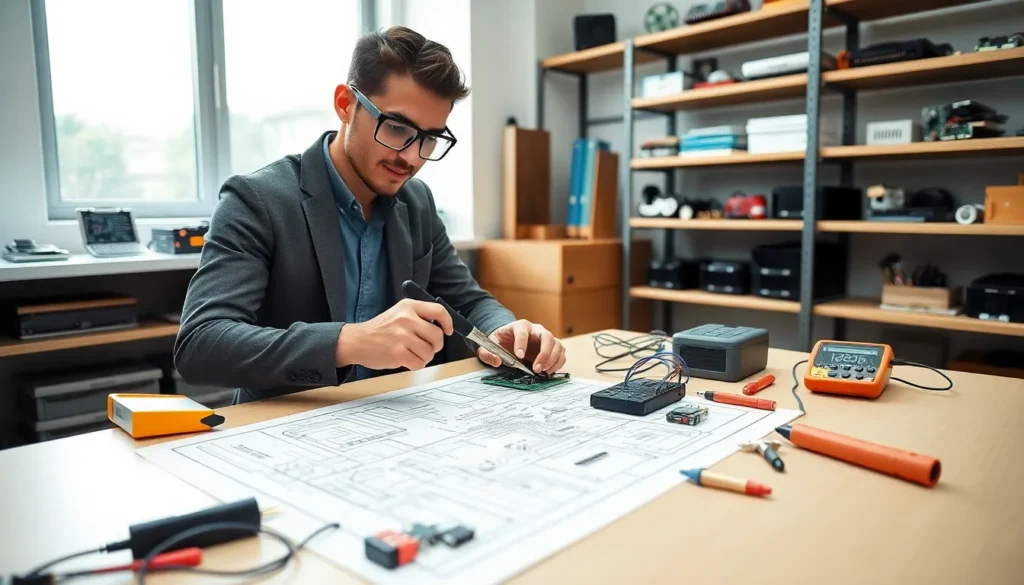In a world where technology seems to be advancing at lightning speed, everyone wants that edge, right? Imagine impressing your friends with a custom gadget you built yourself. Sounds cool, doesn’t it? This guide dives into the exhilarating world of gadget building, where creativity meets functionality. Whether you’re a novice or an experienced DIY enthusiast, you’ll find plenty of insights, tips, and innovative ideas to spark your next project. Buckle up, because the ride into gadget awesomeness is about to begin.
Table of Contents
ToggleUnderstanding the Basics of Gadgets

Before one can jump into the world of gadget building, understanding what gadgets really are is essential. Gadgets can be defined as small electronic devices that serve a particular function. They’re typically portable and often incorporate innovative technologies. From smartwatches that track fitness to quirky USB-powered lamps, gadgets often make our lives easier and a lot more fun.
The first step in gadget creation involves grasping the components that make up these devices. Key elements include sensors, microcontrollers, batteries, and sometimes, connectivity features. Each component plays a crucial role in determining how the gadget operates. Knowing how these parts interact with each other can make a significant difference in the effectiveness of your gadget design.
Choosing the Right Tools and Materials
Selecting the right tools and materials is paramount when embarking on a gadget-building journey. Let’s break down some essentials. A basic toolkit should include a soldering iron, multimeter, wire strippers, and basic crafting tools like scissors and pliers.
Material-wise, using high-quality wires, connectors, and circuit boards can significantly affect the durability and functionality of your gadget. Depending on the project, you may also need various sensors like motion detectors or temperature sensors. Make sure to gather these materials ahead of time so that you can jump into your project without a hitch.
Step-by-Step Process for Building Gadgets
Starting your gadget-building project is often the most thrilling part. Here’s a step-by-step breakdown to guide you:
- Conceptualization: Begin with brainstorming ideas. What problem do you want to solve? What features do you want to include? Sketch out your ideas or create a list of desired functionalities.
- Design: Use design software or simply paper and pencil to draft your initial design. Make sure to plan the circuit layout and how each component will fit together.
- Assembly: Once you have a clear design, it’s time to put things together. Start by soldering the components onto the circuit board. Make sure all connections are secure, as loose wires can lead to malfunction.
- Testing: Before finalizing your gadget, test it in segments. This way, you can identify any flaws before assembling everything into one unit.
- Finalization: After testing and making necessary adjustments, assemble your gadget entirely. Add any outer casing or decorative features that give it a polished look.
Common Challenges in Gadget Building
Even though the excitement of building gadgets, there are certainly hurdles to clear along the way. One common challenge is dealing with circuit malfunctions. For instance, a simple short circuit can bring everything to a grinding halt. Understanding basic electronics and troubleshooting techniques can help overcome these issues.
Another hurdle could be material shortages. Sometimes, vendors may run out of specific sensors or tools you need. It’s always wise to have a backup plan, whether that means sourcing materials from multiple places or even considering alternative components.
Also, time can be an enemy. Gadget building often requires patience and time that can be hard to come by. Setting realistic timelines and breaking the project into smaller, manageable tasks can help mitigate this challenge.
Innovative Ideas for Gadget Projects
Innovation fuels gadget building. Here are a few creative projects that could get the gears turning:
- Smart Plant Watering System: Create a device that waters your plants automatically based on soil moisture levels.
- DIY Wi-Fi Weather Station: Gather local weather data and display it on a small screen.
- Custom Bluetooth Speaker: Build a speaker that connects to devices and adds unique features like LED lights responding to music.
These projects are just the tip of the iceberg. The only limits are your imagination and the available resources.
Tips for Troubleshooting and Optimization
Troubleshooting is an inevitable part of the gadget-building journey. If your gadget isn’t functioning as it should, don’t despair. Start by reviewing your connections. Many issues arise from faulty wiring or improper soldering. Testing each component individually can isolate the issue effectively.
Once your gadget is up and running, think about optimization. Are there faster processors available? Can you trim down any excess components to lighten the load? Sometimes, even tiny adjustments can dramatically enhance performance.
Also, consider gathering feedback from others. Fresh eyes can offer new perspectives and suggestions you may not have thought about.





